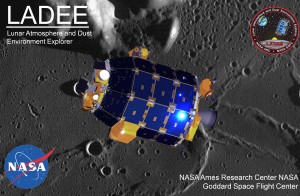NASA’s Lunar Atmosphere and Dust Environment Explorer (LADEE) achieved lunar orbit on Oct. 6.
Thanks to two High Performance Apogee Thruster HiPAT phasing burns, each of the blasts by the Aerojet Rocketdyne bipropellant engine increased the spacecraft’s apogee in preparation for two lunar orbit insertion burns.
“LADEE is designed to characterize the tenuous lunar atmosphere and dust environment, an important study in preparation for returning astronauts to the moon,” said Warren Yasuhara, Aerojet Rocketdyne Vice President of Space Systems.
Two more main engine burns, on Oct. 9th and 12th, will adjust LADEE’s trajectory, settling it into its commissioning orbit.
LADEE is the first spacecraft designed, developed, built, integrated and tested at NASA’s Ames Research Center in Moffett Field, Calif.
The spacecraft was launched on Sept. 6, 2013, from NASA’s Wallops Flight Facility in Virginia aboard the Minotaur V rocket.
LADEE will require multiple burns over a relatively long period of time. The HiPAT engine will continue to periodically re-boost LADEE as it gathers detailed information about the lunar atmosphere, conditions near the surface and environmental influences on lunar dust.
By Leonard David

